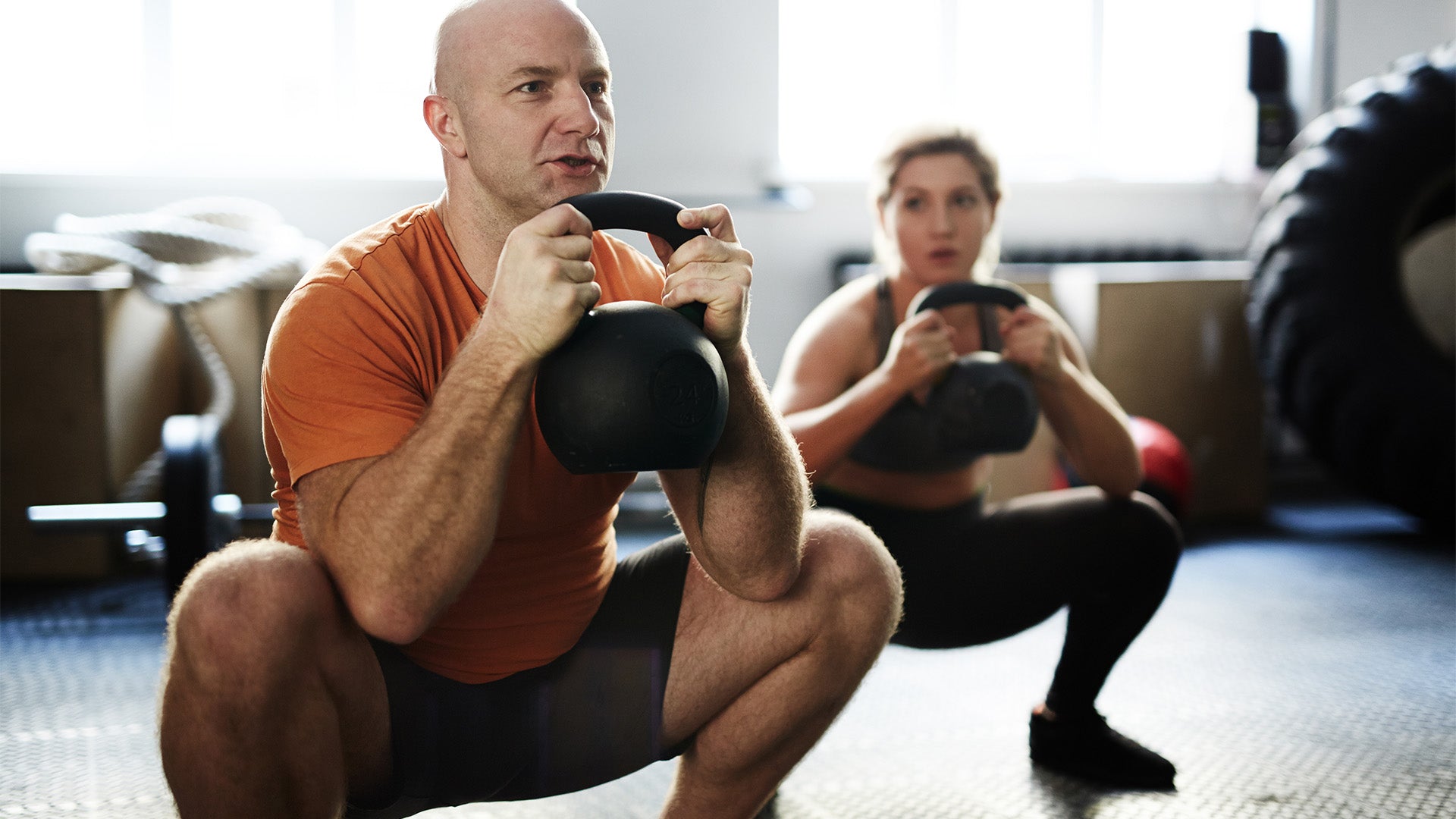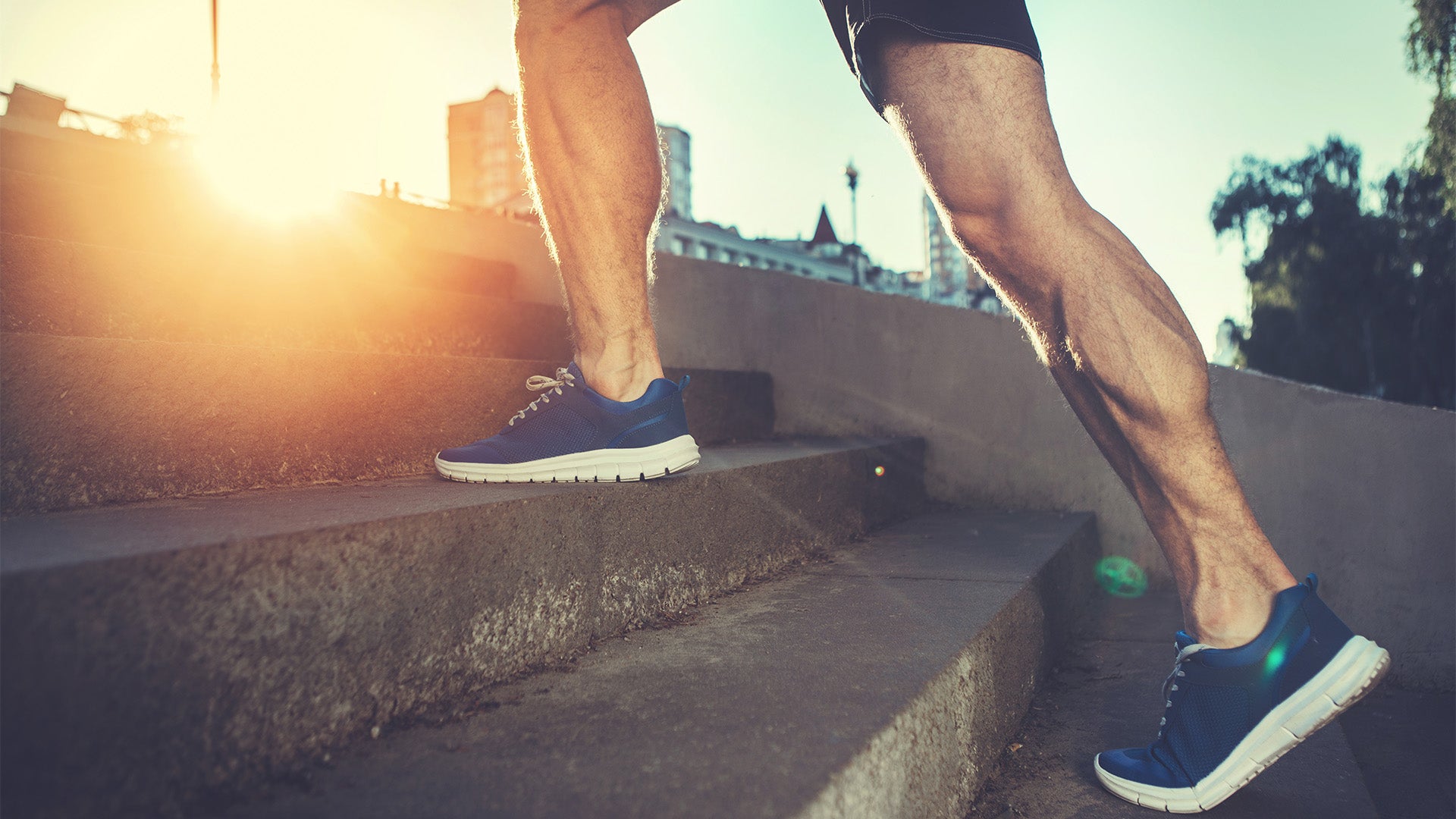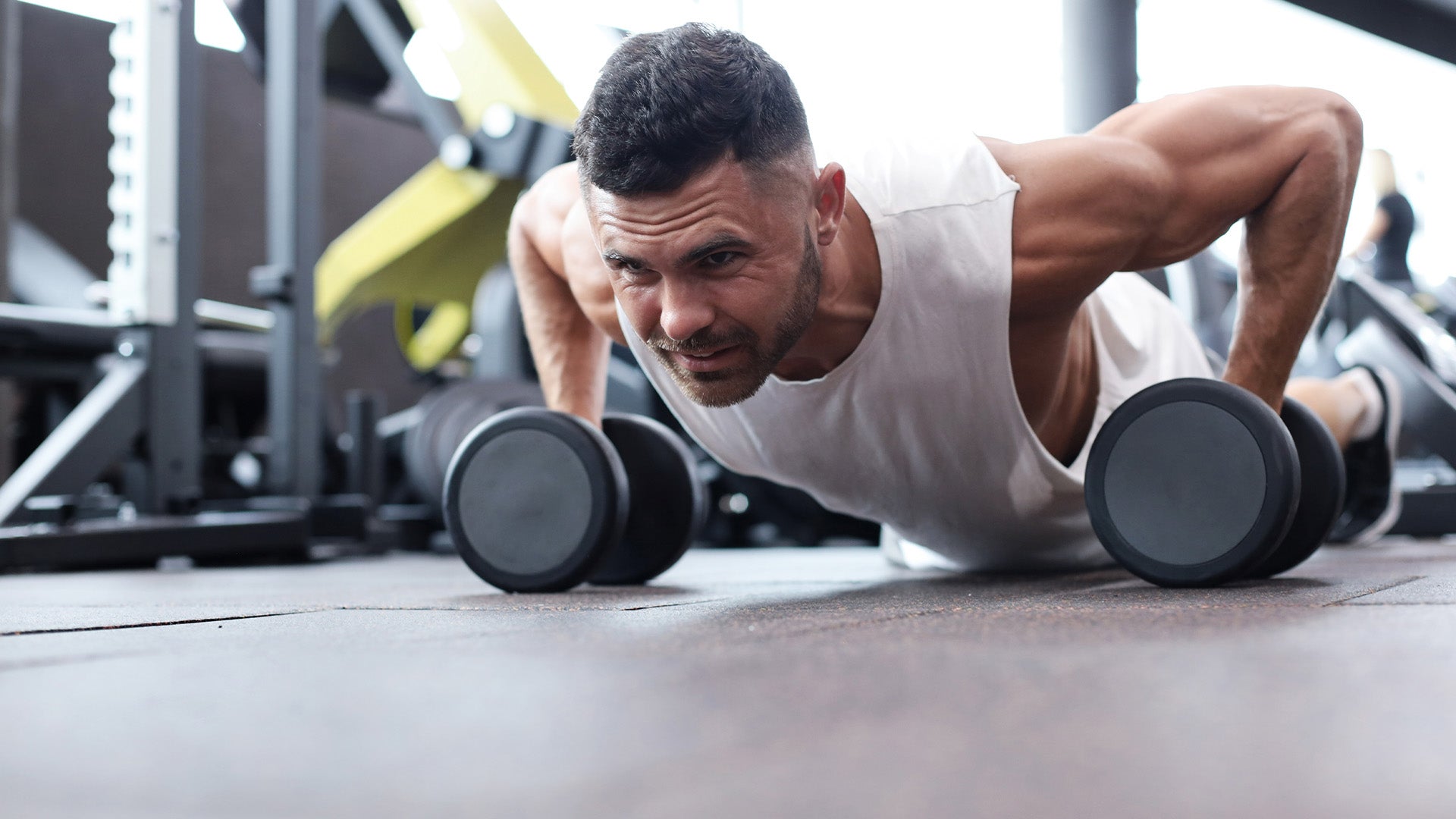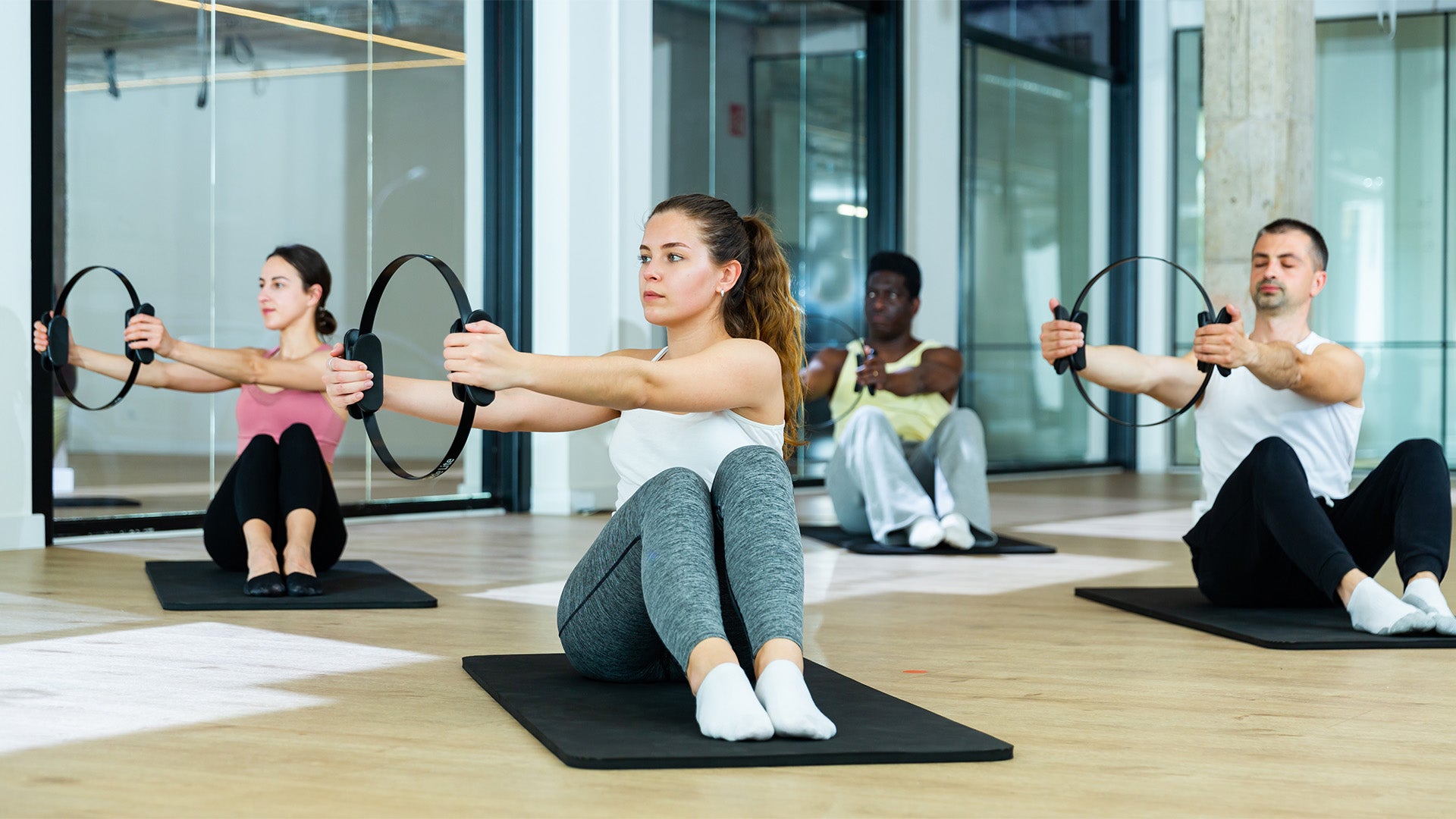8 Lower Body Push Exercises
When people think of push exercises, they tend to immediately think of the chest, triceps, shoulders, and muscles of the upper body. But you’ve got plenty of push muscles beneath the hips, and having a strong lower body can only serve to improve your performance in all other aspects of your wellness.
Primarily, the push muscles of the lower body are your quadriceps, or quads, on the front portion of your thigh. And there are many exercises that target this muscle to the extreme. Let’s take a look at some of the best movements to take your next leg day to the next level.
1. Squat

The squat is one of the basic movement patterns that anyone should be able to accomplish, and it is also one of the most effective exercises for growing the lower body. While this move emphasizes the quads, it also recruits muscles in the glutes and the core when done effectively.
Even the most trained powerlifters can use some pointers on their squat form, so there are a few important tips to remember. For one, tighten the core. You want to imagine that someone is about to punch you in the stomach, as tightening the core helps to keep the lower back straight and prevent rounding. This also reduces the risk of injury.
Also, you want to make sure your feet are just a little wider than shoulder-width apart when completing a traditional squat. The closer your feet are together, the more it recruits the muscles of the quads. So if you bring your feet out wider, you’ll use your glutes more. Neither is right or wrong, but if growing your quads is the goal, keep the feet just about shoulder width.
There are so many different squat variations out there, so here are a few different ways you can switch up a traditional bodyweight squat to progress even further:
- Goblet squat: Hold one dumbbell at your chest like you’re holding a goblet. Keep your chest lifted as you drive the body to the floor.
- Suitcase squats: Hold two dumbbells down at your sides. This places emphasis almost entirely on the lower body rather than using the muscles of the core or lower back, so this is a great option for people with lower back pain.
- Sumo squats: With a sumo squat, you’ll point your toes out at a 45-degree angle and bring your feet out slightly wider than shoulder width. This targets the glutes a bit more than a traditional squat.
- Barbell squats: Place a barbell on the top of your shoulder blades. This is the best option for lower body growth as well as core activation.
- Staggered stance squat: Place one foot slightly in front of the other so the back toes are lined up with the front heel, then drive the glutes to the floor as normal. This places emphasis on the quads on the front, or leading, leg.
- Squat jumps: Adding a jump at the top of your bodyweight movement can turn it into a cardio move to help increase your endurance.
2. Bulgarian Split Squats
If you like it when you’re not able to walk after a killer leg day, then this is the type of exercise you need to incorporate into your lower body push day. Bulgarian split squats are one of the best movements for targeting the quads as well as the glutes.
With a split squat, one leg will be planted on the floor while the other is elevated on a bench behind you. You’ll lower that back leg towards the floor, isolating the front leg in a unilateral movement that wreaks havoc on your quads.
You can do traditional split squats without the bench elevation, too. This will still target that front leg, though not as heavily as a Bulgarian squat. Either way, this is a great move to get a serious lower body pump during your next gym session.
3. Leg Extension

Squats and most other lower body exercises to target the quads don’t isolate the muscle. For that reason, it can be hard to grow them. Leg extensions are one of the few movements that isolate the quads, allowing you to strengthen the tendons and ligaments in ways other exercises cannot.
You’ll need access to a leg extension machine for this one, and when completing the movement, it’s important to move slowly throughout the entire rep to get a good stretch on the quads. Leg extensions are great because they strengthen the patellar ligament, which is a tough muscle to hit with other exercises.
4. Step-Ups
Step-ups are one of the most accessible lower body exercises because you can do them from pretty much anywhere. All you need is a bench – and you don’t even need weights if you don’t have any.
With a traditional step-up, you’ll place one foot on a bench and step up, gently tapping the bench with the opposite foot. This exercise focuses on the quads while also giving the glutes some love.
If you don’t have weights, or if you just want to progress this movement, you’ll want to slowly lower your opposing leg to the floor on each rep. This places maximum emphasis on the quads, hamstrings, and glutes. Time under tension is one of the best ways to grow muscles quickly, so slowing down your reps is always a good idea.
5. Sissy Squats
Sissy squats are a bit of a misnomer because there’s nothing weak about them. This advanced form of a squat is similar to leg extensions in that it trains the quads in a fully lengthened position.
With sissy squats, you’ll hold onto something for stability as you slowly lower your knees to the floor without actually touching the floor. Bend your core backward, keeping your spine straight, as you stretch the quads until you’re no longer able. From there, without using assistance to bring yourself back up, try to return to the starting position.
This is a fantastic move for training the quads in positions that most other exercises can’t match, and it’s an insane move to add to your next leg day. Try to hit about eight reps, only using your arms to pull yourself back up when you need to. The goal is to complete eight reps without needing any help at all.
6. Glute Bridge

Despite the fact that this exercise has a completely different muscle in its name, a glute bridge still recruits the muscles of the quads. It also uses muscles in the hips, making this a great option to change up the exercises in your push-day routine. While it’s not as effective as a deadlift or RDL for growing the push muscles, it still hits the quads, making it great for a lower-body push routine.
When doing a glute bridge, if you want to target the quads a bit more, just bring your feet a little bit closer to your glutes before starting the movement. This stretches the quads and puts more focus on those muscles.
Additionally, you can progress this move by turning it into a hip thruster. Just place your shoulder blades on a bench and put on a lot of heavy weight. Your glutes and hips are much stronger than you think, so try going heavier than you think you might be able to.
7. Lunges
Lunges are another classic exercise because of their ability to use multiple muscles in the lower body. This compound movement has a quad focus while still recruiting muscles in the glutes and hips. There are also plenty of variations to pinpoint specific groups.
When doing lunges, you want to keep your leading knee stacked over your ankle. This helps protect you from over-extension of the knee joint, which can lead to injury.
There are plenty of different lunge variations, each with specific benefits:
- Reverse lunge: A safer alternative to forward lunges, this one still works the quads but targets the glutes a bit more.
- Curtsy lunge: This is a reverse lunge where you bring your back foot right behind your leading leg. It targets the glutes and hips a bit more.
- Side lunge: You can do side lunges by bringing your leg out to the side, driving the glutes back, and keeping your leading knee stacked over the ankle. This is a lunge variation that targets the hip adductor muscles, which is a challenging muscle to target with many other movements.
- Jump lunges: If you need some cardio, a jump lunge burns the quads while also getting your heart rate up.
8. Calf Raises
The weightlifting community might debate whether the calves are considered a push muscle or pull muscle, but since you use them to push yourself off the ground when running or walking, we like to think you can incorporate these into your next lower body push day. Your calves are the muscles on the back of your shins responsible for flexing your ankles.
With calf raises, you’ll hold weights in either hand and then stand on your tippy-toes before slowly lowering back to the floor. This move is most effective when you move very slowly, and it can also activate the muscles more effectively if you put the balls of your feet on a plate to stretch the calves even more during each rep.
The problem with calf raises in a traditional setting, as well as any other strength move, is that your muscles work harder at different portions of the rep. For instance, at the top of a calf raise, your muscles are strongest, but at the bottom of the rep, they’re barely being activated.
This is a limitation of traditional strength training that Speede Fitness is on a mission to fix, and with the Speede Pro, you can get closer to your fitness goals than ever before.
Speed’s isokinetic mode adjusts the resistance throughout the rep, meaning that your muscles will always be giving their maximum output even though the velocity of movement stays the same. So you don’t need to worry about portions of the range of motion where your muscles aren’t even being used.
The best way for you to see the difference is to just feel it for yourself. Check out the Speede Challenger today and see how you can get stronger in a fraction of the time.
In Conclusion
Push exercises in the lower body target the quads and the calves, and they are some of the most important functional movements to maintain overall strength and wellness. While squats are the most common lower-body push movement, you can keep your workout fresh by incorporating these eight movements into your next routine.
Sissy squats and leg extensions train the quads in the lengthened position, while Bulgarian split squats hit almost every muscle in the lower body. Regardless of which exercises you choose, these are not as important as the equipment you use to complete each rep.
Traditional workout equipment has its limitations, but Speede addresses the gaps to give you one of the most effective workouts in a shorter amount of time. Start using your workout time more effectively – try Speede today.
Sources:
Quad Muscles: Function and Anatomy | Cleveland Clinic
Tendon vs. ligament | MedlinePlus Medical Encyclopedia Image.
Anatomy, Bony Pelvis and Lower Limb, Calf - StatPearls | NCBI Bookshelf


